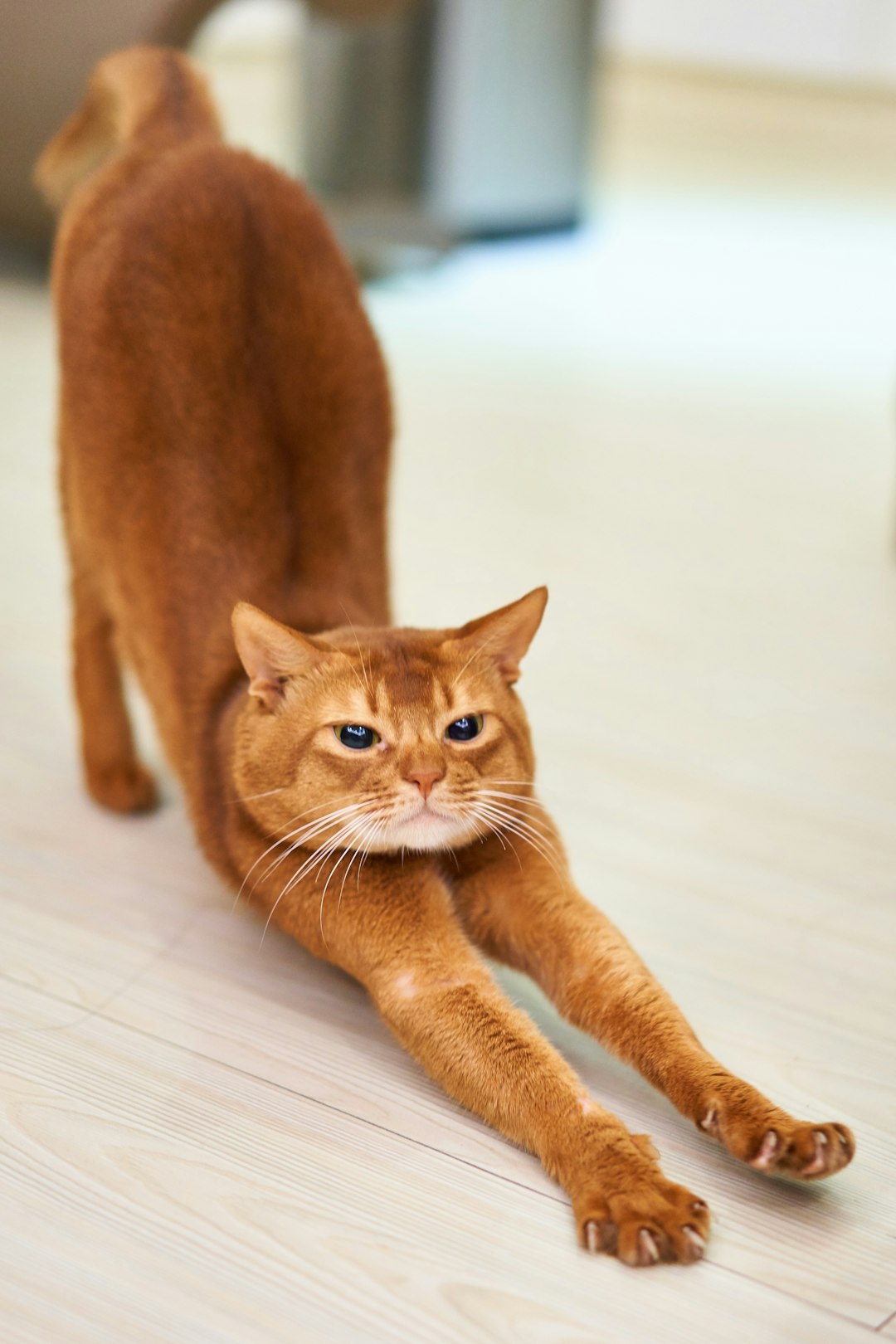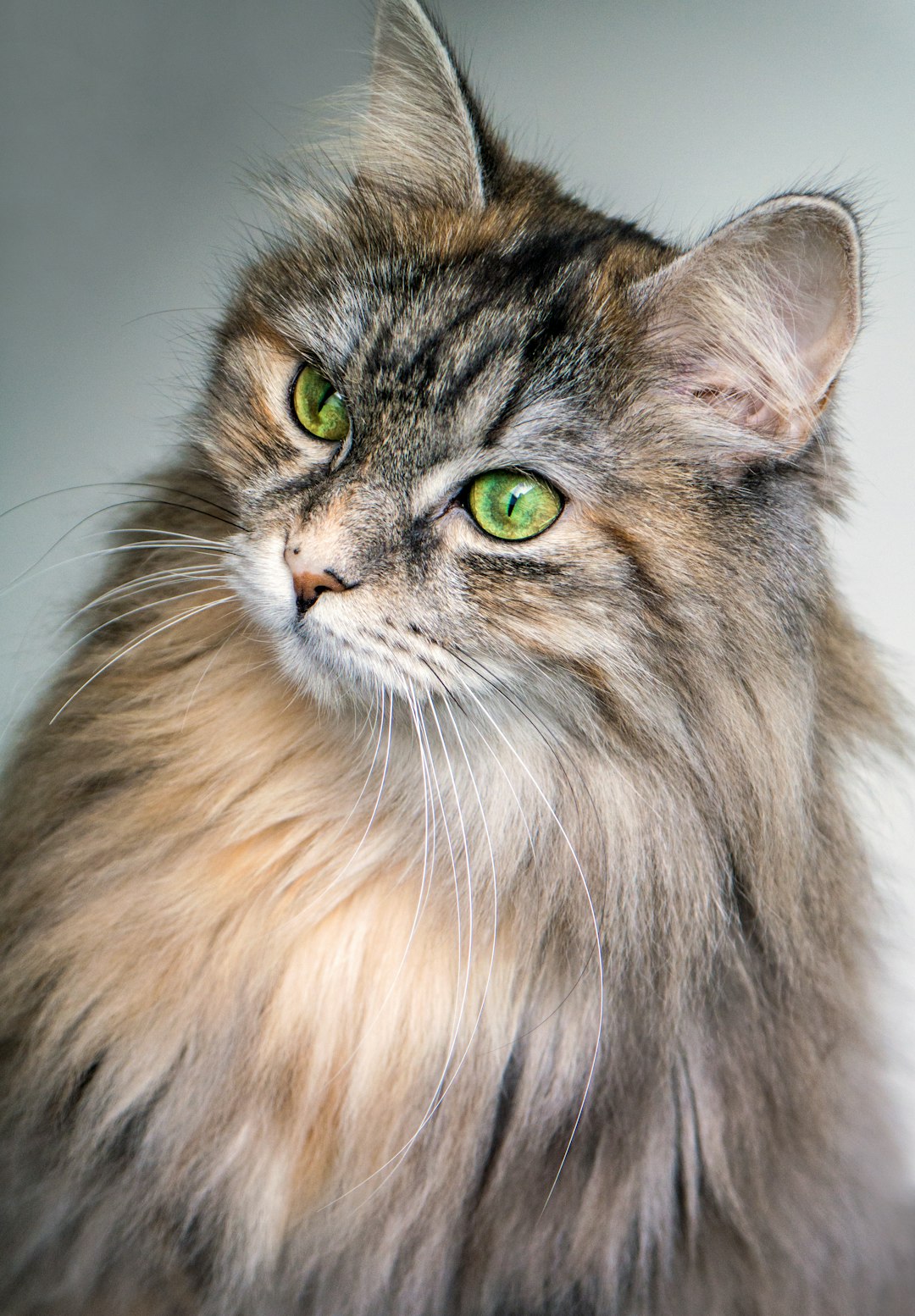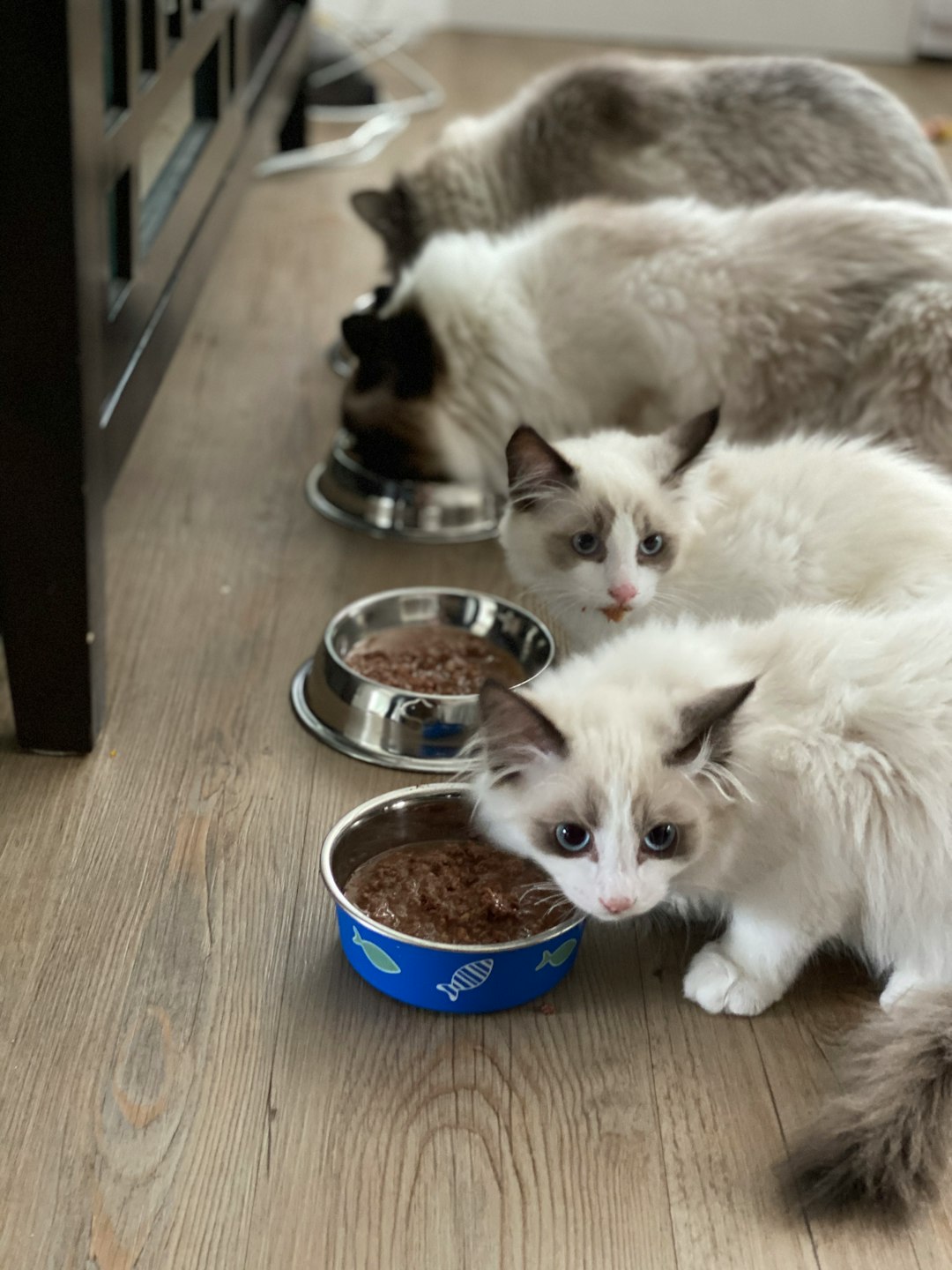Cat ear infections can be a common yet concerning issue for feline companions, often leading to discomfort and anxiety for both the cat and its owner. Understanding how to address these infections effectively is crucial to ensuring your pet’s overall well-being. One of the best methods available for treatment is using Cat ear drops, which can provide targeted relief and promote healing. In this article, we will delve into the essential aspects of cat ear infections, discussing the importance of using ear drops, the various types available, and recommendations that can help you make informed choices for your furry friend. Additionally, we will cover safe administration techniques, potential side effects, and proactive measures to prevent future infections. Let’s explore everything you need to know to keep your cat’s ears healthy and happy!
Understanding Cat Ear Infections
Cat ear infections can significantly impact your feline’s health and well-being. Recognizing the underlying causes and symptoms is crucial in ensuring timely treatment. Let’s delve deeper into this important topic.
Common Causes of Ear Infections in Cats
Understanding what leads to ear infections helps in preventing them. The primary causes include:
| Cause | Description |
|---|---|
| Bacteria | Harmful bacteria may overgrow in the ear, often due to moisture. |
| Allergies | Allergic reactions to food, pollen, or dust can irritate ears. |
| Ear Mites | These tiny parasites thrive in the ear canal, causing irritation. |
| Fungal Infections | Commonly seen in moist environments, introducing fungi into the ear. |
Symptoms to Watch for in Your Cat
Being observant can lead to early intervention. Typical symptoms include:
| Symptom | Description |
|---|---|
| Head Shaking | Cats may frequently shake their head. |
| Scratching | Noticeable scratching at the ear area. |
| Foul Odor | An unpleasant smell may emanate from the ear. |
| Redness or Swelling | Inflammation in or around the ear canal. |
How Ear Infections Are Diagnosed
Diagnosis is pivotal for effective treatment. Veterinarians typically utilize:
| Method | Process |
|---|---|
| Physical Exam | Inspecting the ear for redness, swelling, and discharge. |
| Ear Swab Analysis | Collecting samples to identify bacteria or parasites. |
| Medical History | Discussing previous health issues or environmental factors. |
Recognizing these signs and understanding the causes can empower cat owners to seek timely veterinary attention. This proactive approach is essential in managing ear health and ensuring your feline friend remains happy and comfortable.
Importance of Using Cat Ear Drops
Benefits of Cat Ear Drops
Utilizing appropriate ear treatments is crucial for maintaining your feline’s health. Cat ear drops specifically target ear infections and can provide several benefits, including:
| Benefit | Description |
|---|---|
| Quick Relief | They alleviate discomfort and itching, helping your cat feel more at ease. |
| Effective Treatment | They contain active ingredients aimed at eliminating bacteria and yeast, which are common culprits. |
| Easy Administration | Most formulas are designed to be simple to use, allowing for stress-free application. |
How Cat Ear Drops Work
These solutions function by directly targeting the source of the infection. Active ingredients usually include:
- Antibiotics: Combat bacterial infections.
- Antifungals: Address yeast overgrowth.
- Anti-inflammatory agents: Reduce swelling and soothe irritation.
By delivering their active ingredients straight into the ear canal, these solutions enable a concentrated attack on the infection while minimizing exposure to other areas.
When to Consider Using Cat Ear Drops
Understanding the signs that your cat may need these treatments is essential. Look for symptoms such as:
- Frequent scratching of the ears or head
- Excessive wax buildup or discharge
- Unpleasant odors emanating from the ears
- Redness and swelling in the ear canal
If you notice any of these signs, consulting your veterinarian to discuss the potential need for ear treatment is advisable. Early intervention can lead to a better outcome for your feline friend.
Types of Cat Ear Drops Available
Prescription vs. Over-the-Counter Cat Ear Drops
When considering ear treatments for your feline companion, it’s essential to differentiate between prescription and over-the-counter options. Prescription ear drops are usually recommended by veterinarians and are tailored to treat specific conditions, such as bacterial or fungal infections. These products often contain stronger active ingredients. In contrast, over-the-counter alternatives provide general relief from minor issues, such as wax buildup or mild irritation. Below is a comparison of the two:
| Feature | Prescription Ear Drops | Over-the-Counter Ear Drops |
|---|---|---|
| Strength | Higher, more effective for serious infections | Usually milder, suitable for minor issues |
| Usage Guidance | Requires vet consultation | Can be used at home without veterinary advice |
| Cost | Often more expensive | Generally more affordable |
Natural Cat Ear Drop Options
For cat owners looking for gentler solutions, natural ear drops are an excellent choice. These products typically contain plant-based ingredients known for their soothing and anti-inflammatory properties. Common natural components include:
- Aloe Vera: Hydrates and calms irritated skin.
- Tea Tree Oil: Offers antimicrobial benefits but should be used with caution due to its potency.
- Chamomile: Calms inflammation and redness.
Always consult with your veterinarian before using natural options to ensure they are safe for your pet.
Active Ingredients to Look For in Cat Ear Drops
Selecting cat ear drops with effective active ingredients is crucial for successful treatment. Here are key components to consider:
| Active Ingredient | Benefits |
|---|---|
| Gentamicin | Antibiotic effective against gram-negative bacteria |
| Miconazole | Antifungal properties that combat yeast infections |
| Hydrocortisone | Reduces inflammation and itching |
By understanding the types of ear drops available and their ingredients, you can make an informed choice for your cat’s ear health.
Top Recommended Cat Ear Drops
Popular brands of cat ear drops
When it comes to treating ear infections in felines, choosing quality products is paramount. Here are some popular brands that have gained a strong reputation among pet owners:
| Brand | Features | Key Ingredients |
|---|---|---|
| Virbac Epi-Otic | Non-toxic, hypoallergenic, and odorless | Salicylic acid, propylene glycol |
| Zymox Ear Solution | Natural enzymes for gentle cleaning | Lactoperoxidase, lysozyme |
| MediPets Ear Cleaner | Helps maintain clean ears and prevent odor | Aloe vera, witch hazel |
| Vet’s Best Ear Relief | Soothing relief with natural ingredients | Tea tree oil, aloe, vitamin E |
User reviews and experiences
Customer feedback often plays a huge role in product selection. Many cat owners have reported positive experiences with the above brands, noting remarkable improvements in their cats’ ear health. Commonly mentioned benefits include:
- Quick Relief: Most users observed noticeable relief within a few days of use.
- Ease of Use: Many drops come with convenient applicators that make administering easier.
- Reduced Vet Visits: Effective treatment leads to fewer trips to the veterinary office for ear infections.
Expert veterinarian recommendations
Veterinarians often recommend specific brands based on effectiveness and safety. They emphasize the importance of consulting with pet healthcare professionals before starting any treatment regimen. Notably, veterinarians trust:
- Zymox for its effectiveness against chronic infections.
- Virbac for regular ear cleaning and odor control.
- Vet’s Best for a gentle, natural approach to ear care.
By taking into consideration popular brands, user experiences, and expert recommendations, pet owners can confidently choose the right solution for maintaining their cat’s ear health.
How to Administer Cat Ear Drops Safely
Step-by-step guide to applying cat ear drops
Administering ear medication can be a straightforward process with the right technique. Follow these steps to ensure safe and effective application:
- Prepare the Environment: Choose a calm area, free of distractions.
- Gather Supplies: Have your drops, cotton balls, and a towel on hand.
- Hold Your Cat: Gently wrap your feline in a towel, leaving only its head exposed to prevent sudden movements.
- Position the Bottle: Hold the dropper above your cat’s ear, being careful not to touch the ear with the tip.
- Administer the Drops: Squeeze the recommended number of drops into the ear canal.
- Massage the Base of the Ear: Gently massage the ear base to help distribute the medication.
- Wipe Excess: Use a cotton ball to wipe away any excess fluid.
Tips for calming your cat during treatment
Calming your cat during treatment can improve the experience for both you and your pet. Consider these calming strategies:
- Use Treats: Reward your cat before and after the application with treats.
- Speak Softly: Use a soothing voice throughout the process.
- Create a Comfortable Space: Ensure your cat feels secure in its surroundings.
What to do if your cat resists
If your cat resists treatment, try these techniques:
| Technique | Description |
|---|---|
| Hold Firmly, But Gently | Maintain a firm grip to prevent sudden movements. |
| Distraction | Use toys or treats to divert their attention. |
| Seek Help | Enlisting a second person can make the process smoother. |
Being patient and persistent is key; successful administration will improve your cat’s health and well-being.
Potential Side Effects of Cat Ear Drops
Common side effects to be aware of
When using ear medications for your feline friend, it’s crucial to recognize that cat ear drops may lead to certain side effects in some cases. Here are some common reactions to keep an eye on:
| Side Effect | Description |
|---|---|
| Ear Irritation | Sometimes, your cat may experience redness or itchiness in the ear. |
| Discharge | A change in ear discharge could indicate a negative reaction. |
| Swelling | Some cats may show swelling around the ear canal. |
| Allergic Reactions | Rarely, some cats may develop an allergy to the ingredients. Symptoms may include excessive sneezing or behavioral changes. |
When to contact your vet
If you notice any of the above symptoms, it’s essential to monitor your cat closely. However, you should reach out to your veterinarian if you observe:
- Persistent irritation or discomfort after administering the ear drops.
- Increased redness or swelling.
- Signs of a severe allergic reaction, such as difficulty breathing or profound lethargy.
Your vet can provide immediate advice and may suggest an alternative treatment plan if side effects occur.
How to minimize risk of side effects
To enhance the safety of your cat’s ear treatment, consider these preventive measures:
- Follow Instructions: Always adhere to the dosage and administration guidelines provided by your veterinarian.
- Check Expiry Dates: Ensure the medication is within its expiry date to avoid effectiveness issues.
- Monitor Closely: Keep an eye on your cat for at least a few hours after administration to catch any adverse reactions early.
By taking these preventive steps, you can help protect your furry friend while effectively treating ear infections.
Prevention of Ear Infections in Cats
Preventing ear infections in your feline companion is essential for their overall health and well-being. By following certain practices, you can significantly reduce the likelihood of infections.
Routine ear cleaning practices
Regular ear cleaning is crucial in maintaining your cat’s ear health. Here are some tips to follow:
| Frequency | Cleaning Method | Tools Needed |
|---|---|---|
| Bi-weekly | Cotton balls with solution | Vet-recommended cleanser |
| Monthly | Inspect for debris | Flashlight |
| As needed | Gently wipe outer ear | Soft cloth |
It’s essential to use a vet-approved solution to avoid irritation.
Strategies for keeping your cat’s ears healthy
In addition to cleaning, consider these strategies:
- Keep your cat’s environment clean: Regularly remove dust and allergens from their surroundings.
- Limit exposure to water: Excess moisture can promote bacterial growth, so dry your cat’s ears after baths or swims.
- Maintain a healthy diet: A nutritious diet strengthens the immune system, making infections less likely.
Signs that require veterinary attention
Being vigilant about your cat’s health can prevent minor issues from escalating. Watch for these signs that indicate a potential ear infection:
- Frequent head shaking
- Excessive scratching at the ears
- Foul odor coming from the ears
- Redness or swelling in the ear canal
If you notice any of these symptoms, consult your veterinarian for advice. Regular check-ups and monitoring will help keep your cat’s ears healthy and infection-free.
DIY Cat Ear Care Solutions
Homemade remedies for minor ear issues
When it comes to caring for your cat’s ears, homemade remedies can provide an effective alternative for minor issues. Always keep in mind, however, that these solutions are best suited for mild problems and should not replace professional veterinary care for serious conditions. Here are a couple of remedies you might consider:
| Remedy | Ingredients | Instructions |
|---|---|---|
| Witch Hazel | 1 part Witch Hazel | Apply a few drops gently into the ear canal using a cotton ball to help clean the ears. |
| Apple Cider Vinegar | 1 part Apple Cider Vinegar | Dilute with an equal part of water and use a cotton ball to wipe the outer ear for its antifungal properties. |
Essential oils and their safe use
Essential oils can be beneficial, but it’s crucial to approach them with caution when it comes to your cat. Oils like lavender and tea tree have antibacterial properties; however, cats are sensitive to many oils. Therefore, it’s essential to dilute these oils appropriately. Use a very tiny amount (1-2 drops) mixed with a carrier oil and consult lists to assess safety.
| Oil | Use | Safety Tips |
|---|---|---|
| Lavender | Calming effect | Avoid direct contact with sensitive areas. |
| Cedarwood | Antifungal | Ensure proper dilution before application. |
Consulting your vet before trying DIY methods
While DIY solutions might seem appealing, it’s essential to consult your veterinarian before trying any home remedies. Your vet can evaluate the severity of your cat’s ear problems and recommend safe and effective treatment options tailored to your pet’s specific needs. They can also guide you in determining if cat ear drops are necessary, ultimately ensuring that you’re making the best choices for your furry friend’s health.
Cost Considerations for Cat Ear Drops
Understanding the price range of cat ear drops
When it comes to treating your feline’s ear infections, understanding the price range of ear medications is crucial for any pet owner. Generally, the cost of these products varies significantly depending on the brand, formulation, and where you purchase them. On average, you can expect to spend between $10 to $30 for a bottle of ear drops, with specialty or prescription treatments potentially costing more — up to $50 or higher. Below is a simple breakdown of price ranges:
| Type of Ear Drops | Price Range |
|---|---|
| Over-the-Counter Solutions | $10 – $20 |
| Prescription Options | $20 – $50 |
| Veterinary Clinic Purchases | $30 – $60 |
Insurance coverage for cat ear drops
Pet insurance can make managing healthcare costs more manageable for your furry friend. Many policies cover routine medical expenses, which may include certain medications like ear treatments. However, coverage can vary; it’s essential to check with your provider. Some insurance plans only cover specific brands or require a veterinarian’s approval before reimbursement. Reviewing your policy details can save you a lot of hassle and unexpected expenses.
Budget-friendly options for pet owners
If you’re concerned about spending a lot on your cat’s health, there are budget-friendly alternatives available. Look for generic brands that provide similar treatments at lower prices without compromising on quality. Additionally, buying in bulk or during sales can help reduce costs. Many online retailers offer discounts, so don’t forget to shop around! For pet owners on a tight budget, consider the following:
| Savings Tip | Description |
|---|---|
| Generic Brands | Often less expensive; look for FDA-approved options. |
| Bulk Purchasing | Buying multiple bottles can lower the per-unit price. |
| Online Discounts | Keep an eye on sales and coupons from various retailers. |
Taking these cost considerations into account can ensure your furry friend receives the necessary care without breaking the bank.
Frequently Asked Questions about Cat Ear Drops
How long does it take for cat ear drops to work?
The effectiveness of ear treatments can vary, but many pet owners notice improvements within 3 to 7 days after administering cat ear drops. Factors such as the severity of the infection and the specific product used play crucial roles in determining healing time. Consistent application is key; ensure you follow the dosage instructions provided by your veterinarian to maximize effectiveness.
Can I use cat ear drops for other pets?
Yes, some ear medications may be suitable for a variety of animals, but it’s essential to consult a veterinarian before using these products on other pets. Dogs, for instance, may have similar ear issues, but their treatment requirements can be distinct. Using the wrong formulation can cause harm, so double-check with a professional.
What should I do if my cat’s condition worsens?
If you observe a decline in your cat’s health after starting the treatment, contact your veterinarian immediately. Signs of worsening conditions may include increased redness, swelling, or discharge from the ear. Your vet may recommend an alternative treatment or adjustments in your cat’s care plan to ensure the best outcome.
| Question | Answer |
|---|---|
| How long for results? | Usually 3 to 7 days, depending on severity and compliance. |
| Can it be used for other pets? | Some can, but consult a vet first. |
| What to do if condition worsens? | Contact a vet for guidance on possible adjustments. |
These responses address common concerns and help ensure that your feline friend receives the best care. Always prioritize open communication with your vet for tailored advice.
Frequently Asked Questions
What are cat ear drops and how do they work?
Cat ear drops are specialized liquid medications designed to treat ear infections and other ear-related issues in felines. They usually contain antiseptic, anti-inflammatory, or antibacterial ingredients to effectively address infections or irritations within a cat’s ear canal. When applied according to the veterinarian’s instructions, these drops can help alleviate symptoms such as itching, redness, and discharge while promoting overall ear health.
How do I know if my cat needs ear drops?
To determine if your cat may need ear drops, look for signs such as excessive scratching at the ears, shaking of the head, strong odors coming from the ears, or visible discharge. Additionally, symptoms of pain like yowling or sensitivity to touch around the ears can indicate an infection. It’s always best to consult a veterinarian who can perform a proper examination and recommend the appropriate treatment, including the potential use of ear drops.
Are there safe over-the-counter ear drops for cats?
While there are over-the-counter ear drops available, it’s essential to be cautious. Many products are formulated for dogs or have ingredients that may not be safe for cats. Therefore, it is highly recommended to seek a veterinarian’s advice before administering any ear drops to your cat. A veterinarian can provide safe options and a proper diagnosis, ensuring your feline receives the right treatment and does not experience any adverse reactions.
How often should I apply ear drops to my cat’s ears?
The frequency of applying ear drops to your cat’s ears depends on the specific product and the severity of the condition being treated. Typically, veterinarians provide instructions based on the medication’s formula. Some may require application once or twice a day for a specific duration, while others may have different guidelines. Always follow the instructions provided by your veterinarian and ensure you complete the entire course of treatment to prevent recurrence of the infection.
Can I clean my cat’s ears before applying ear drops?
Yes, cleaning your cat’s ears can be beneficial before applying ear drops, as it removes debris and allows better penetration of the medication. However, it’s crucial to use a vet-recommended ear cleaner specifically designed for cats. Avoid using cotton swabs or anything that can damage the ear canal. After cleaning, ensure the ears are dry before administering the drops to maximize effectiveness and minimize discomfort.



